Understanding the MinIO Subscription Network - Direct to Engineer Engagement

If you are reading this blog, odds are you understand the core value of MinIO. Simple, powerful, performant object storage that is cloud-native and compatible with AWS S3, but will run anywhere (public cloud, private cloud, colo, edge, on-prem) and on any hardware.
While simplicity is at the core of everything we do here at MinIO, it doesn’t mean you are on your own. When things get big, cross clouds or involve mission-critical workloads, even the most sophisticated enterprises want someone on the other end of the line.
The MinIO Subscription Network (SUBNET for short) accompanies a commercial subscription and provides peace of mind - from the dual license model (AGPL and Commercial) to the direct-to-engineering support model.
This post focuses on some of the features associated with this unique model and will be the first in a series that details the features and capabilities that come with a commercial relationship.
MinIO has a tendency to be sticky and to grow. Good software is like that. As customers deploy more instances of MinIO in their environments they want production level guidance and subject matter experts to help guide architecture planning and capacity requirements - often across racks and regions.
Eventually those customers need to update these systems as well and often seek assistance on the various nuances that are involved while doing the upgrade and maintenance as many components are involved other than MinIO binary itself. Not only that but there are invariably critical security issues or bugs that require long term support so these issues can be fixed in the version you are using.
Moreover, the modern software stack is in a state of constant flux. No matter how resilient the infrastructure or software is, there are instances where things go down or don’t work as expected - requiring help from the subject matter experts that have built the software. As an organization that means getting issues fixed immediately - enabling you to conform to certain SLAs that you’ve guaranteed your customers.
The MinIO Subscription Network is more than just support, think of it as an extension to MinIO and your organization. Just like you would expect quick answers from your high level engineers in a collaborative environment you can expect the same from SUBNET. Let’s go into some additional detail on some of the key components of The MinIO Subscription Network to see how it benefits your organization.
Support and SLA
With the MinIO Subscription Network there is no concept of a L1, L2, L3 support engineer and so on. When you open a request you get direct-to-engineer support from our actual engineers – the same team that builds and maintains the product. The advantage of this is when you are reaching out with critical requests, which is most of the time, you are not wasting your time explaining your issue to a low-level NOC engineer who then has to pass along the same info to another engineer. Needless to say most information gets lost in translation and you end up repeating it again. At MinIO, there are ONLY L4 engineers available to answer your requests and respond in real time. MinIO even shows you how many engineers are online - at all times.

The Standard plan includes an SLA so you can expect a response within 48 business hours and a response for Enterprise plan within 1 hour. But these are the maximum time frame, more often than not you will see a response from our L4 engineers within a few minutes of opening a request. In addition to tighter SLAs on the Enterprise plan (1 hour), you will also be able to interact via phone or web conferencing with these engineers to resolve the issue as soon as possible.
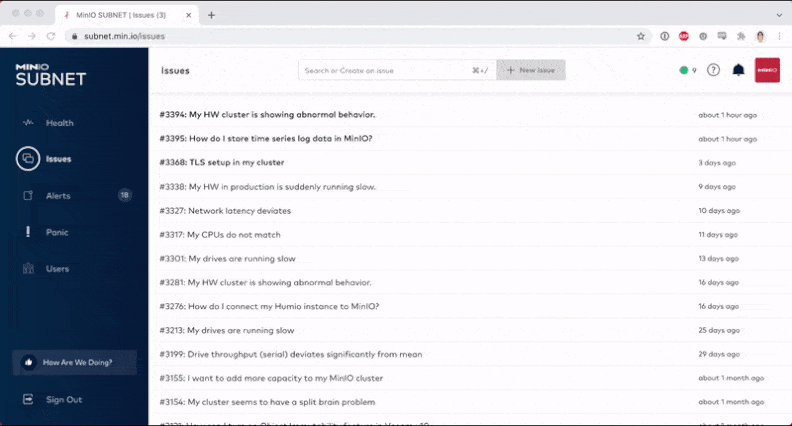
Don’t take our word for it - here is what the folks who left reviews on Gartner’s Peer Insights had to say:
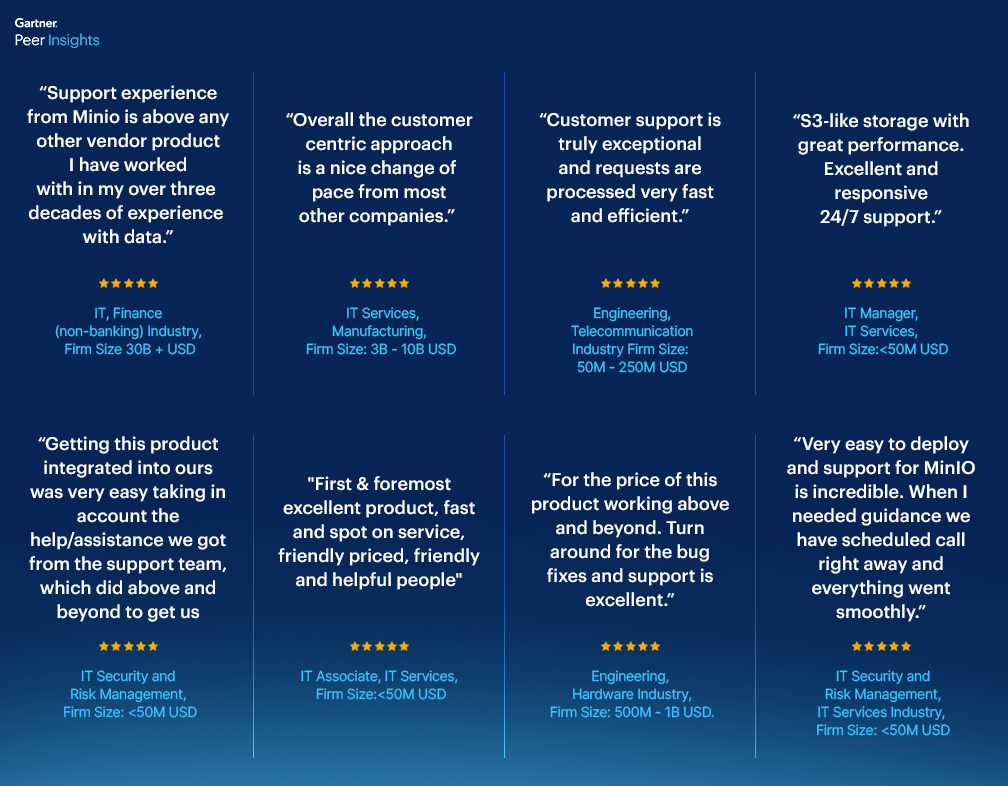
Persistent Tracking and Collaboration
You might be wondering, why do we use this “ticketing” system and why not something like Slack to go back and forth with updates? For one, we wanted the ability to see what you were typing as you typed it - this provides context and speeds the overall response time by allowing us to address each issue as it appears. That means that even if your response is long, the team here can start to think about responses, research documentation and so forth.
This maximizes your interaction time with the engineering team while ensuring that everything gets communicated.

Code, Log Files, Search and More
One of the most important things from existing issues is that we can learn from them in case we come across something similar in the future. In that regard we’ve provided a feature rich user interface that’ll allow you to share as much information as possible with us. There is no limitation on what type of information can be shared in the portal.
You can format code snippets in various languages, attach files, text formatting, links, emojis and much more.
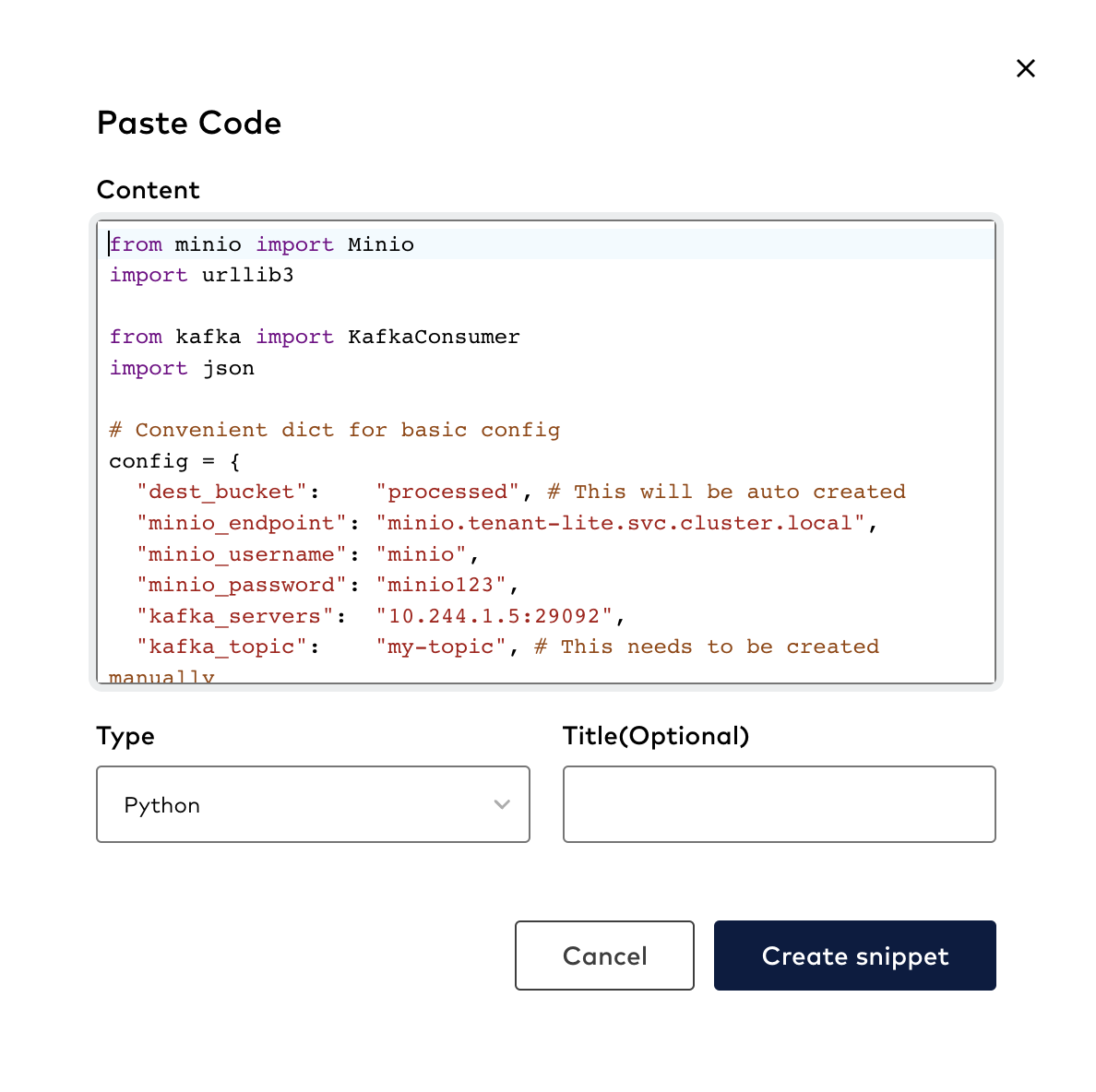
If you want to share images that can also be done so screenshots can be shared.
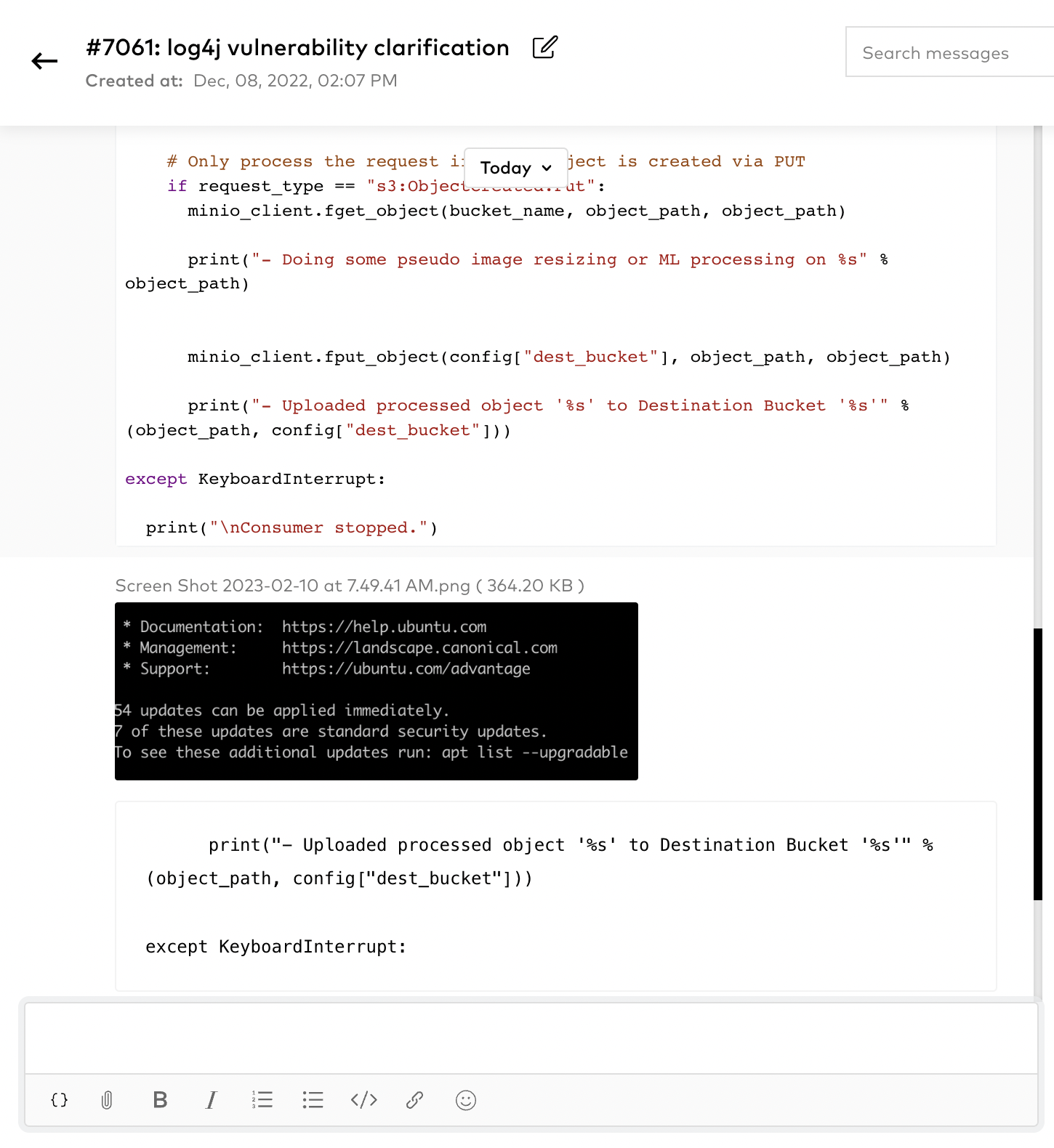
In addition to searching for issues, you can also search for Files and Attachments.

Here are some more media types such as code snippets, logs and others that can be shared as part of your response.
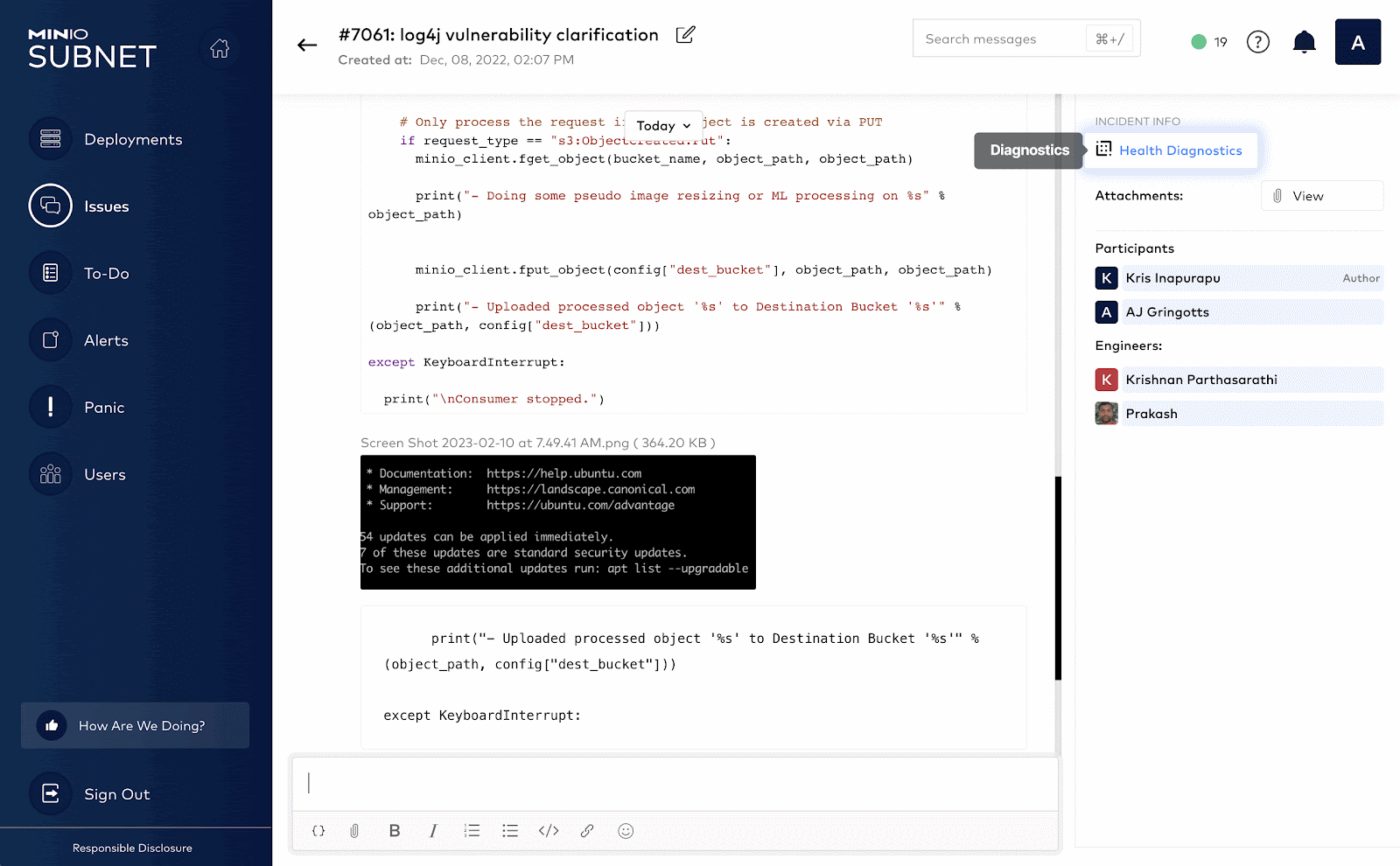
In the above image on the right hand side panel, you should find common information relevant to the particular issue. You can see the cluster health diagnostics and deployment info. You can also see people from your team and MinIO team who have contributed to the conversation.
Because Communication is Everything….
While the MinIO Subscription Network has all sorts of features (which we will detail in future posts) the core mission is to create a communication platform unlike anything else. We view supportability as a software problem and our approach to the communication aspect of it reflects that. We have built features that reduce friction, encourage discussion and reward sharing of information. We also put software engineers on the job - because supportability as software doesn’t mean supportability doesn’t have a human component. It does and it should and that human component should get at the root issue in a fraction of the time of someone who is only passingly familiar with the code.
We have said it before and we will say it again - you cannot support your product with your engineering team unless your product is amazing. It simply will not work. MinIO’s product attributes let the model work and that also means the engineers are not so stressed that they just want to “get you off the phone” so they can get back to coding features. That model doesn’t work. MinIO supports hundreds of customers with this model - from startups to the largest enterprises on the planet.
For more information, ask our experts using the live chat on the pricing page to learn more about the commercial experience.






